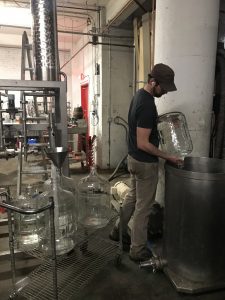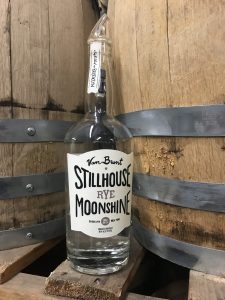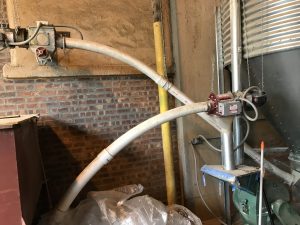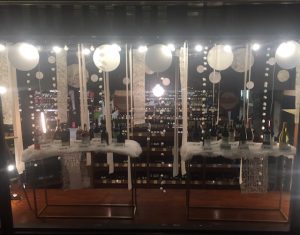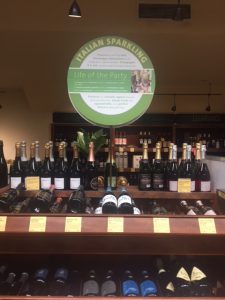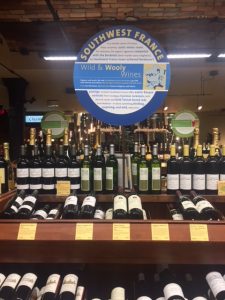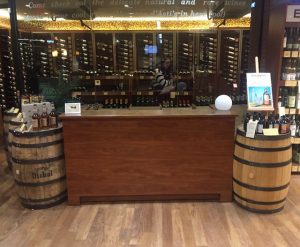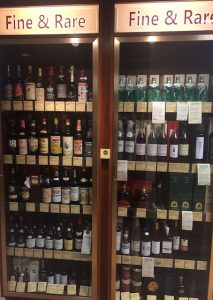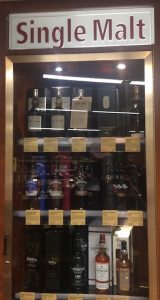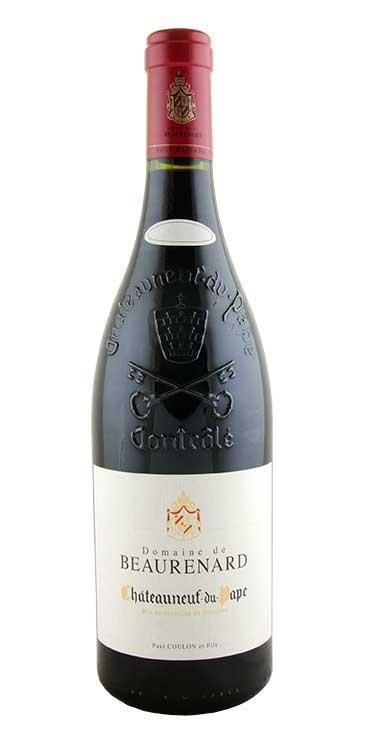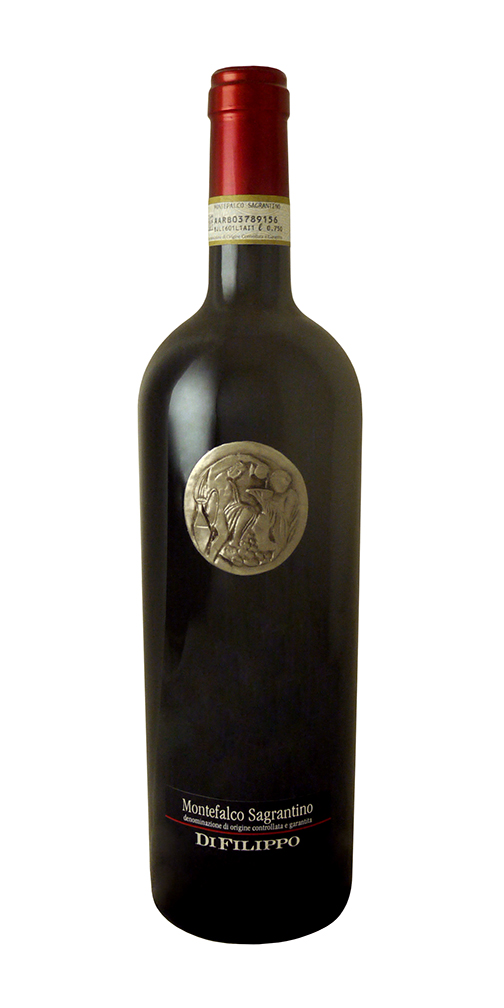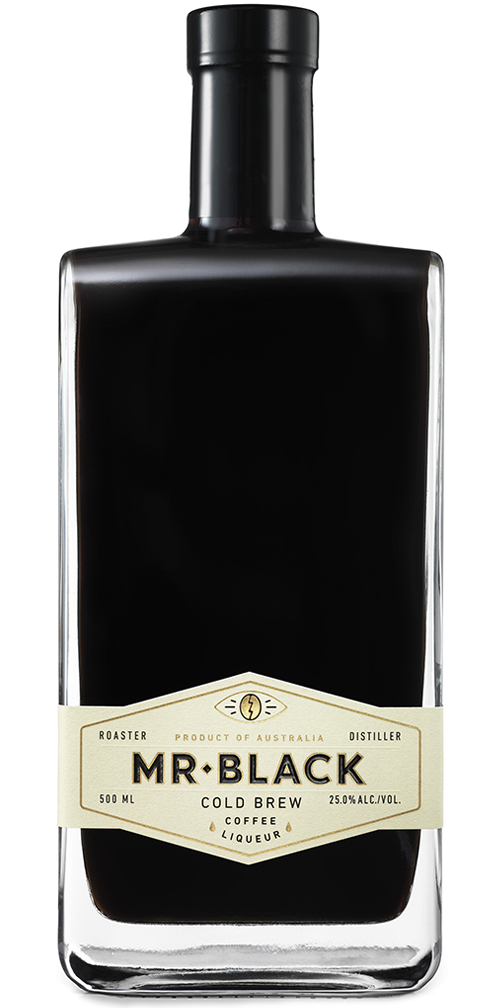This past Saturday, May 19, I visited Vanbrunt Stillhouse located at 6 Bay St, Brooklyn, NY 11231. Vanbrunt Stillhouse has been since 2012 and is owned by Daric Schlesselman and Sarah Ludington. Daric is also in charge of most of the liquor production. Except for the saghi which is made by a worker named Bran.
Saghi is a Japanese spirit that is commonly made out of rice but can be made with other starches such as potatoes and even carrots. The rest of the alcoholic products are made by grains such as barley, rye and even corn. I participated in their 2pm tasting tour that was guided by Seth. Seth is fairly new in the industry with only 3 years of experience from working at Vanbrunt Stillhouse . The tour included four tastings of whiskey for $10. The whiskies that the distillery offers are American, Bourbon, Rye and Moonshine.

“Grassy, floral notes with the fresh oak sweetness of a bourbon & hints of tobacco.” – VanBrunt Stillhouse
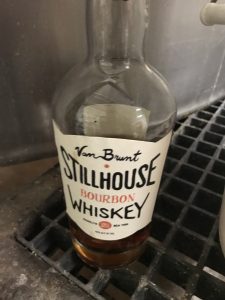
“Bold and full bodied with notes of chocolate, butterscotch, sweet cream and banana, finishing smooth with hints of spice pepper, maple, nuts and coffee. ” VanBrunt Stillhouse
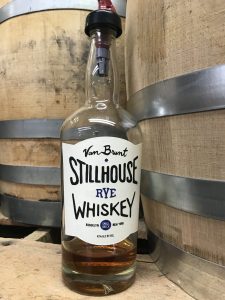
“Spicy on the palate with sweet floral nose, hints of coffee and chocolate, with raisins and cherries, and a lovely toasted almond finish.” – VanBrunt Stillhouse
Moonshine is unaged whiskey which explains it’s transparent color. Seth has explained very thoroughly step by step. He has mentioned that their barrels come from Indiana and Minnesota. The barrels are made out of American oak and are charred by the coopers. The char on the inside gives their whiskey a unique smokey texture and flavor as it ages. They have two sizes for the barrels. The smaller ones hold about 15-20 gallons of liquid and the larger ones hold about 25-30 gallons. At their facility, they prefer to use the smaller ones because they provide more air flow and age the whiskey faster than they would in the larger barrels. This has a very similar description to tawny Port wines. The first to make any alcohol beverage whether it is wine, beer or spirits is to prepare your grapes/grains. These ingredients have one important thing in common and that is their sugar source. In the case of spirits, corn, malt, rye, barley or other grain is used to produce alcohol thus giving you the final product.
They grind the grains into a flour then water is added to blend together. As the ingredients continue to mix this step is called mash. After mash, the paste is transferred to kettles where the fermentation takes place. At this point the alcohol is about 9% but rapidly goes up after the yeast has been added(“pitching the yeast”). Once the yeast has done its job, the ingredients are run through a grist hydrator that filters the alcohol.
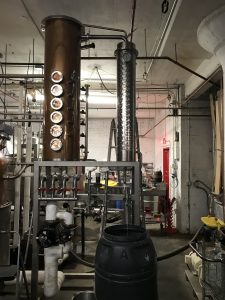
This is a grist hydrator that distills the liquor(extracts the alcohol). When making whiskey, the liquid is usually ran through the machine twice to have a higher alcohol concentration. This process is what separates spirit making from beer making and is done after fermentation.
There are three parts known as head, heart, and tails. The head part is immediately removed since it is toxic which means it can’t be consumed. Afterwards, is the heart and the tails which are the parts we want for the final product. Both are very similar but tails are like a diluted version of the heart with less alcohol content. At this point, the alcohol is about 150 proof. Before bottling, it is diluted with water to bring down the alcohol. Moonshine would be immediately bottled since it is unaged whiskey. For the rest of the whiskey production, the aging process usually takes about 2-3 years. They sit the barrels on their sides and sometimes use the solera system to make blends. This is called “mingling the flavors”.

This is a smoker located outside of the facility in the back. It is not used on a daily basis but rather it is reserved for special whiskeys such as their smoked corn whiskey. Grains or corn are layered flat onto trays and are placed in the smoker. This provides additional smokiness to their whiskey.
Overall, my experience was educational. Originally, Vanbrunt did not have a tour open for 2pm because they were hosting a private event for Culinary Institute of America, which was cancelled with short notice. Luckily, since there was not a lot of time to fill up the time slot, it was only myself and two other people so I was able to ask plenty of questions.
References:



